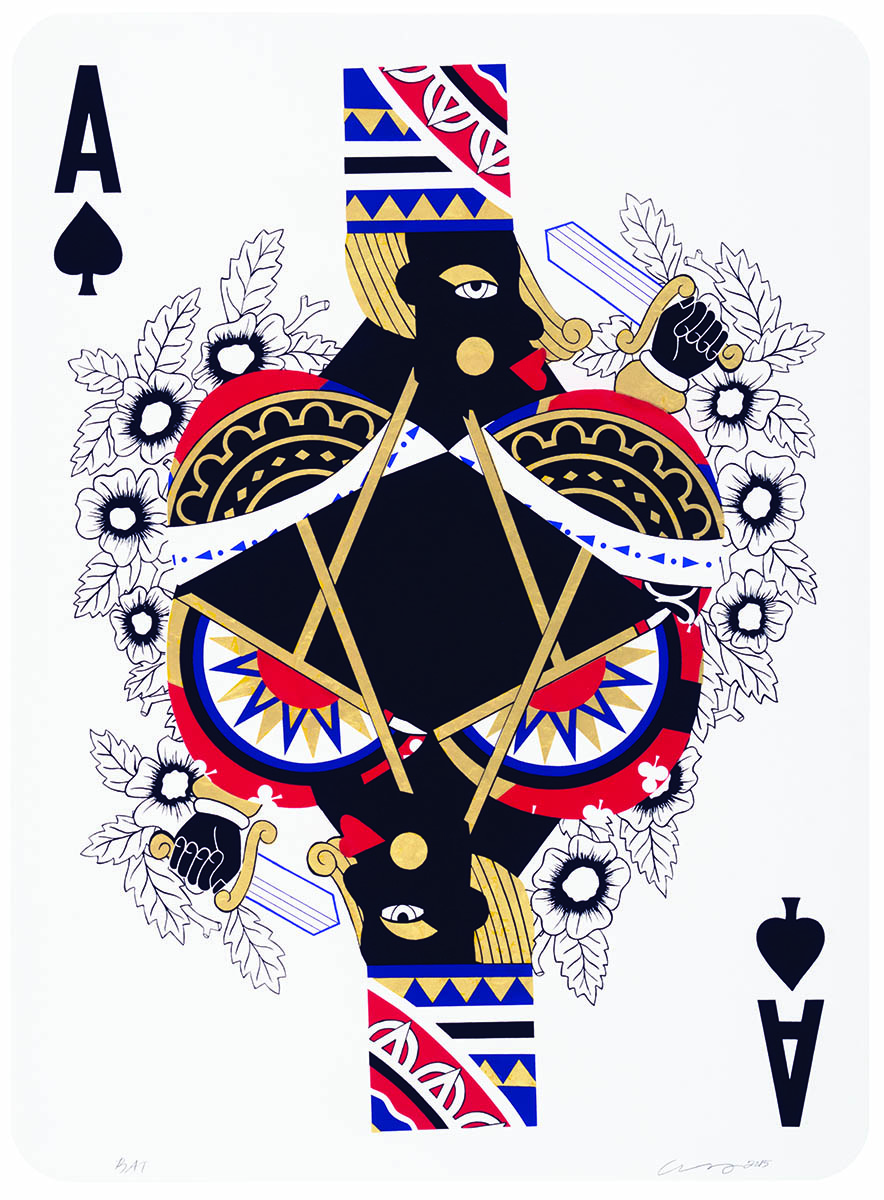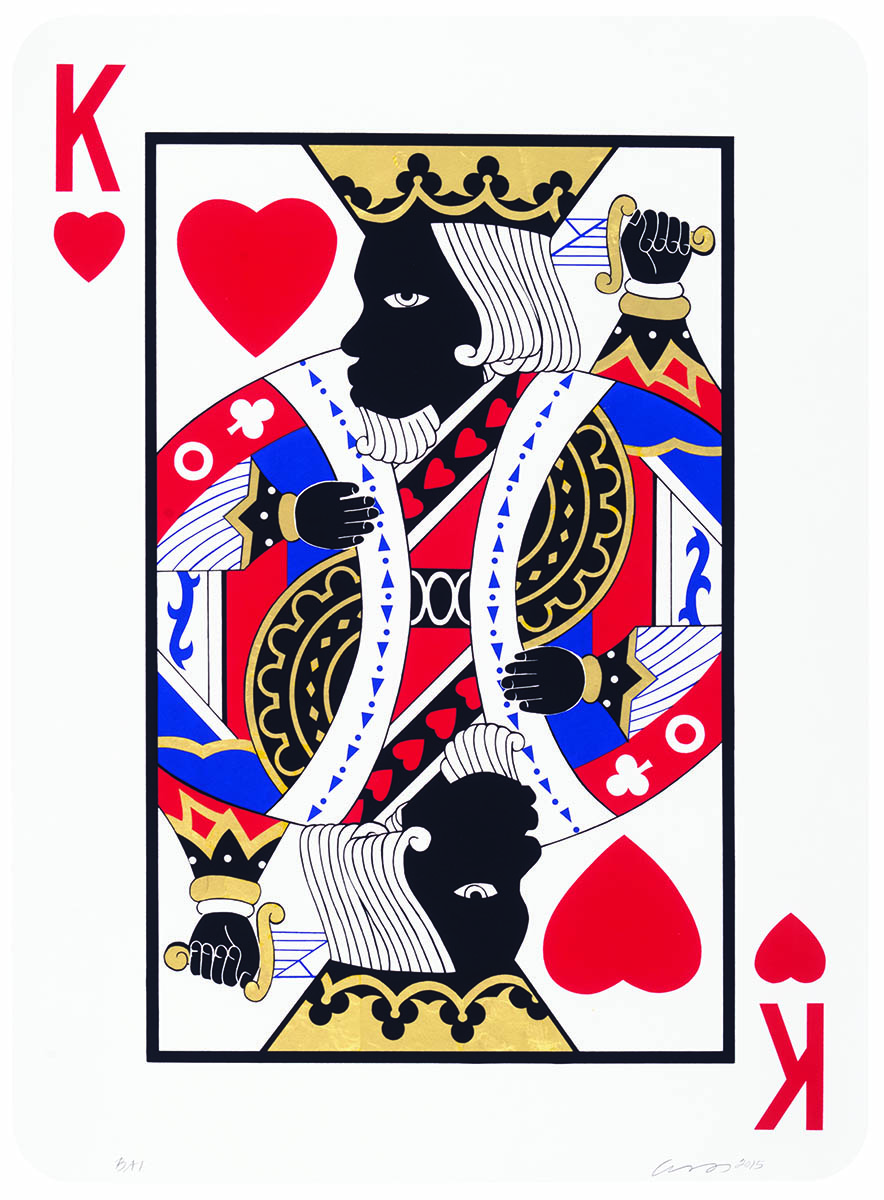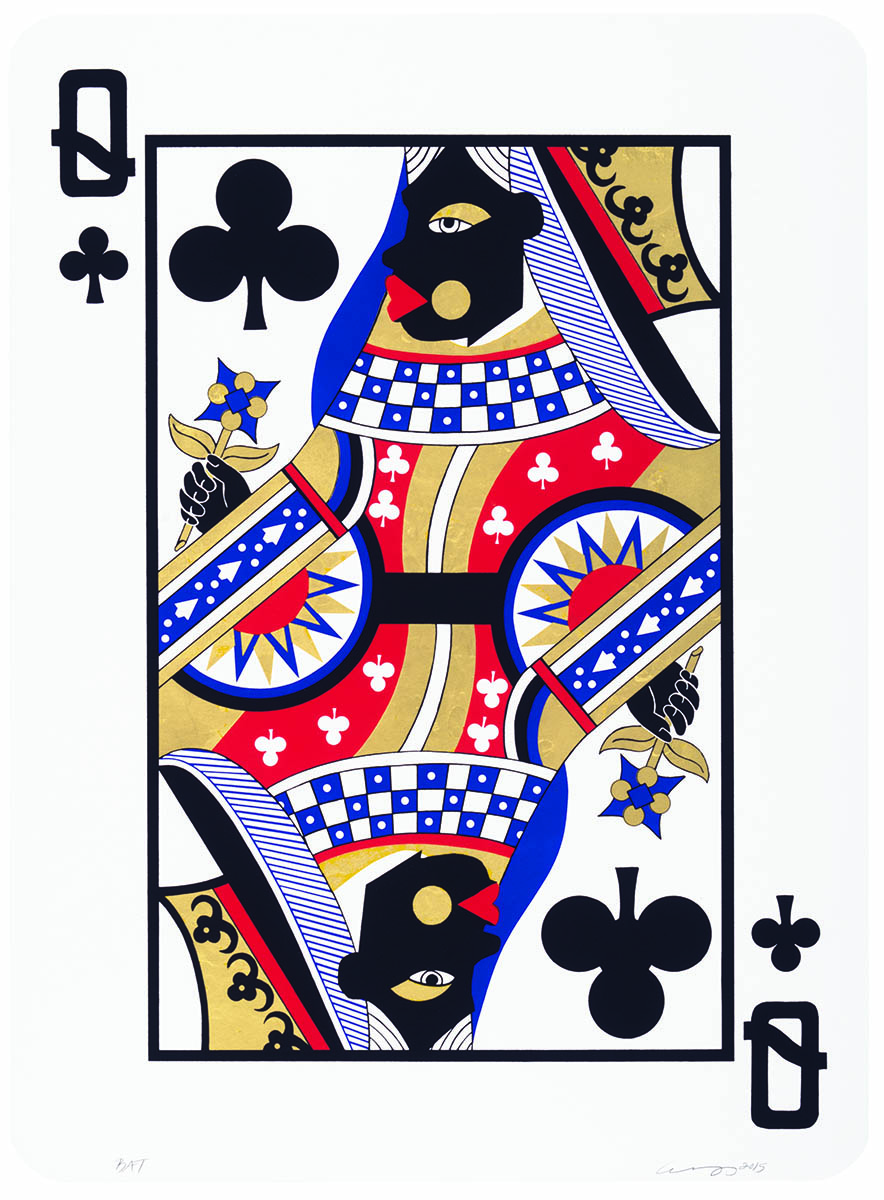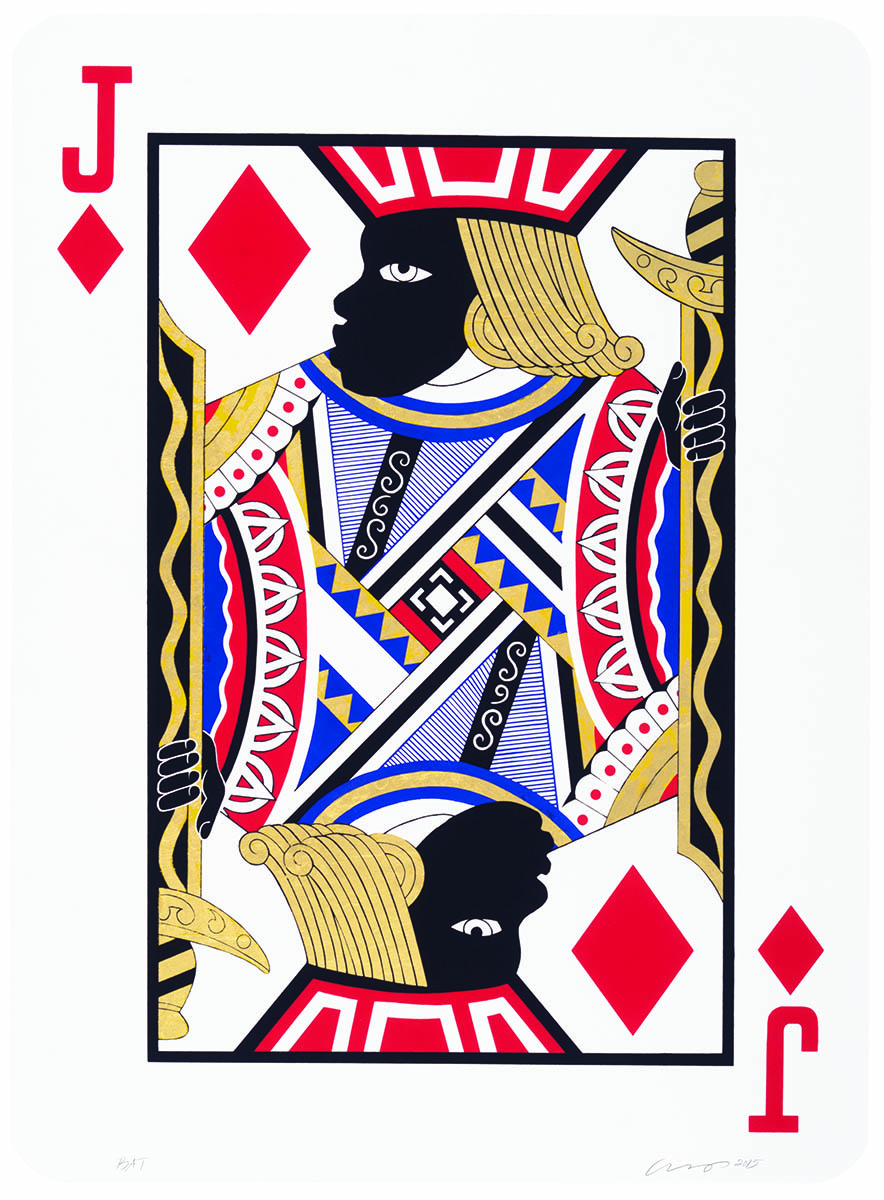Derrick Adams, "Game Changing," 2015
 DERRICK ADAMS
DERRICK ADAMS
Game Changing (Ace), 2015
Screenprint and gold leaf on paper
Image: 30 x 22 inches; Framed: 39 1/2 x 31 1/4 inches
Courtesy of the artist and Lower East Side Printshop
 DERRICK ADAMS
DERRICK ADAMS
Game Changing (King), 2015
Screenprint and gold leaf on paper
Image: 30 x 22 inches; Framed: 39 1/2 x 31 1/4 inches
Courtesy of the artist and Lower East Side Printshop
 DERRICK ADAMS
DERRICK ADAMS
Game Changing (Queen), 2015
Screenprint and gold leaf on paper
Image: 30 x 22 inches; Framed: 39 1/2 x 31 1/4 inches
Courtesy of the artist and Lower East Side Printshop
 DERRICK ADAMS
DERRICK ADAMS
Game Changing (Jack), 2015
Screenprint and gold leaf on paper
Image: 30 x 22 inches; Framed: 39 1/2 x 31 1/4 inches
Courtesy of the artist and Lower East Side Printshop
CURRENTLY ON VIEW: Stamp 1st Floor, Corridor to West Study Lounge
Derrick Adams uses mixed media and performance to examine ideas of identity formation in relation to black representation in popular culture. Adams’s Game Changing series plays with French playing cards by replacing the white figures on traditional ‘face cards’ with black figures and by interweaving their dense imagery with suggestions of African garments and textile patterns. By gilding and enlarging his cards to a grand scale, Adams also transforms their function, making it impossible to imagine using them to play an actual game.
Adams appropriates the images of playing cards in the tradition of pop art, a movement that emerged in the 1950s. Pop artists manipulated popular imagery to form societal critiques. By using iconic images, Adams seeks to comment on black representation, and its limitations, in mass culture. Unlike their source material, Adams’s cards are not perfectly symmetrical and each figure he depicts has slightly different features, resulting in the overall impression of eight individuals rather than four sets of mirror images. The work signals diversity within blackness not often represented in mass media.
This series takes part in a contemporary discourse led by black artists, such as Lorna Simpson and Jefferson Pinder, who generate images of black figures that combat mainstream narratives that often reduce African American identities to stereotypes. Adams reclaims the history of black representation by inserting black figures into a form of popular imagery that has been historically understood as exclusively white. He also invents a new face card—the Ace of Spades—suggesting that new spaces need to be carved out for diverse representations of blackness.
Rachael Carruthers, UMD '17
History and Studio Art
Derrick Adams’s Game Changing transforms familiar “face cards” from a standard deck of playing cards into images of black royalty. They remix and interrogate the symbolic codes underlying coats of arms and other medieval heraldry devices that inform card design. Adams drew inspiration from the modern American artist Romare Bearden (1911–1988), whose epic collages layer geometric forms and jewel-toned hues to explore African American life and history. Adams constructed his “playing cards” in segments of brilliant color. He screenprinted four layers of acrylic ink to their surfaces—black, blue, red, and yellow—and then, while the yellow ink was still wet, applied 23.5 carat gold leaf. As the ink dried the gilding abraded slightly, giving texture and individuality to each print. The result is a set of precious objects, each with a presence surprisingly unlike the mass-produced item it recalls.
Stamp Gallery, 2016
